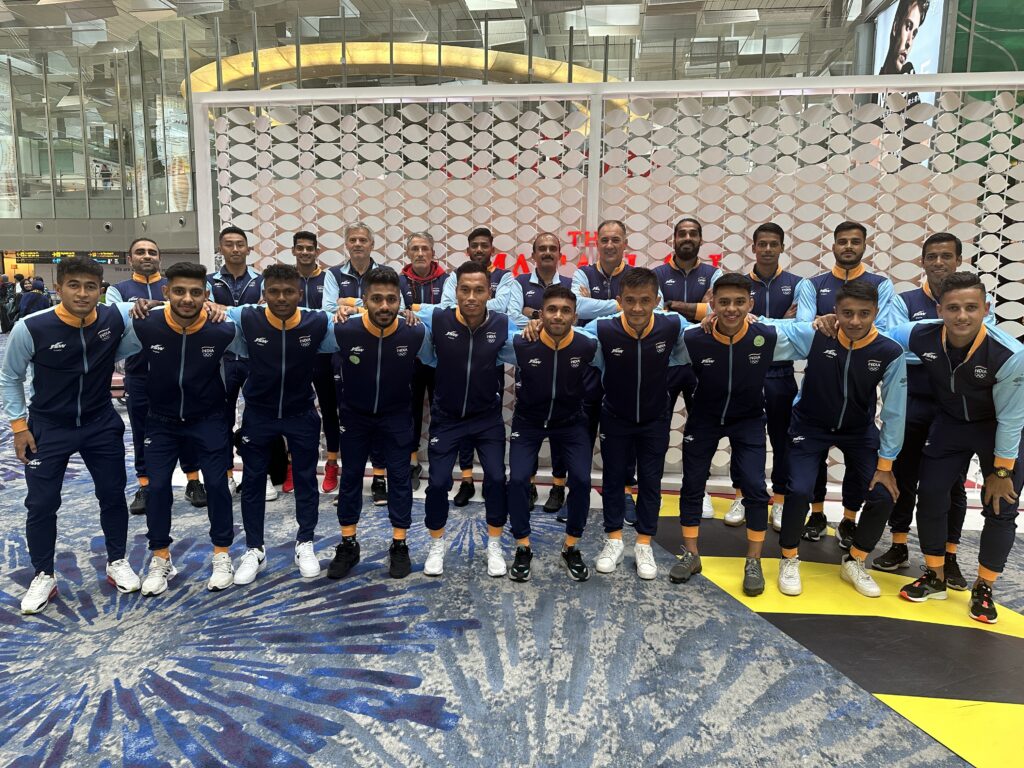
India begin their Asian Games football adventure with a tough assignment against China, the hosts, in Hangzhou on Tuesday evening. Igor Stimac, the coach, doesn’t even have the full 22-man squad at his disposal, and it will be interesting to see what sort of formation India line up in. So, how did things get to this point? Here, RevSportz looks at a few pertinent questions and issues that every Indian football fan would like an answer to. Between the AIFF, the ISL clubs and other stakeholders, they owe us some explanations.
Why leave it to the last?
Anurag Thakur, the Sports Minister, announced that the Indian football team would be going to the Asian Games on July 26, a full seven weeks before the team flew to China. Before the end of July, every stakeholder should have been around a table discussing both the upcoming schedule and the need for tweaks, as well as squad composition. That names were being pencilled in and crossed out as late as September 15 shows everyone in dismal light.
The significance of government exemption
Because it’s largely an Under-23 tournament, the Asian Games doesn’t impact India’s FIFA ranking. It also doesn’t fall inside any of the accepted FIFA windows, so clubs are not obliged to release players for the squad. But, here’s the thing. The government and the Indian Olympic Association (IOA) bent the eligibility rules to allow the football team to participate. India are nowhere close to being among the top eight in Asia, but the recent upturn in results, which took the FIFA ranking up to 99, encouraged the government to relax the criteria. Once they did, it was a given that they expected a strong squad to be sent to China, one that would showcase the recent progress made by Indian football. With the games delayed by a year, it’s now effectively an Under-24 competition, with three overage players allowed. Given how many of the regular national-team starters are below 24, a fairly formidable side could have been sent to China. Instead, Stimac will go into the first game with two recognised defenders. Do not expect any favours from the government in future.
It Takes Two Hands to Clap
The Indian Super League (ISL) clubs are convenient villains here, for not releasing players in the ‘national interest’. But it’s the clubs who pay their salaries, and they have every right to expect certain things. Had an Asian Games squad been formalized well in advance, then the players not part of it could have flown straight back from Thailand after the King’s Cup, and those playing in China could have stayed on and got a few valuable practice sessions. The ISL clubs don’t just have the league to worry about. Several are part of Asian club competitions – Mumbai City FC played and lost to Iranian opponents on Monday night – and you cannot expect them to sacrifice such valuable experience.
In England’s Premier League, Jurgen Klopp, Liverpool’s manager, was raging about a 12:30 lunch-time kick-off on Saturday, after several of his players had returned from international duty only in the early hours of Thursday. In this case, the squad expected to do India proud at the Asian Games finally got to bed around 2am in the early hours of Tuesday morning, after a marathon journey and an 11-hour layover at Singapore Airport. They kick off at 7:30pm on Tuesday evening. That isn’t preparation, it’s criminal lack of planning. Criminal.
The sanctity of the FIFA window
Most top leagues only release players five days or a week before the start of an international window. Wataru Endo, for example, captains Japan and has recently moved to Liverpool from Stuttgart. He will join up with Japan’s Blue Samurai for the Asian Cup only at the last possible minute. The coaching staff are not unduly perturbed by this because they know Endo is playing in the strongest league in the world, alongside the best players, and under the supervision of one of the world’s top three coaches. But as Stimac keeps reiterating, the standard in the ISL is in no way comparable to that of the leading leagues. When players go to take on opponents like Qatar and Kuwait, it’s a huge step up from what they face in the ISL. Five days or a week of preparatory work will do nothing to improve India’s national team.
If Stimac and his squad are to have any chance at all to cause an upset or two at the Asian Cup, or in the World Cup qualifiers that precede it, a minimum of two to three weeks of preparation is a must. Stimac may not have a glittering CV as coach, but he played with distinction for one of the strongest sides that European football has seen in the past three decades. That in itself, allied to the respect he commands from the likes of Luka Modric, elevates him above any of the coaches currently in the ISL. India should only view the FIFA windows as guidelines. As of now, the league is nowhere near good enough to talk of the window being sacrosanct. If the national team are to do well and raise football’s profile, windows spanning just a week are not enough.
Also Read: An 11-hour Layover, and Naps in a Spa – the Indian Football’s Team Asian Games Journey



